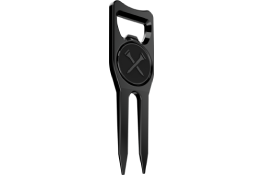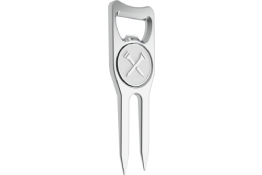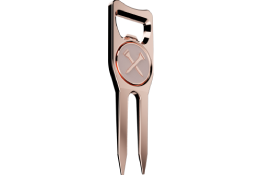Things to Consider when Purchasing a Golf Laser Range Finder
After borrowing your playing partners Range Finder for the past seven Saturdays you realize it’s time you look into one for yourself. All your friends have them, they are beating you by a few shots every round (has to be because of the range finder right?), and its just time to invest. The problem becomes, just like all things golf-related, there are so many choices. There is a large range of pricing and features as well. Some things are going to matter for you and your game and others are not.
Here are a few important factors that all golfers need to consider before buying a range finder.
Magnification: Most of the Range Finder’s currently on the market have some type of magnification. This magnification is what allows you to have some accurate yardage from several hundred yards away. Of course, you are probably wondering why this is important if you are that far out from the green. Laser Range Finder’s can be used in a number of different ways. For instance, if you are on a tee box and need to know how far it is to the water hazard it will help to know that it’s 257 yards. Might be worth switching to a 3 wood off the tee.
Battery Life: Along with Battery Life it’s important to find out if the battery is rechargeable or will need to be replaced. Something that will last you for an entire season of golf is certainly going to be worth it but some will drain battery much faster than this. In general Laser Range Finders have a pretty long battery life.
Slope/No Slope: Slope can be an amazing feature to have on a Range Finder. This feature will take into account elevation as well as distance to give you an even more accurate reading. The problem with Slope is that it is SO accurate that it is generally not allowed in tournament play. If you are going to be participating in events make sure that your device has a slope function that can be disabled. Most USGA events will require that the Slope function be disabled before the start of Tournament play. Although the slope feature can help quite a bit it also changes the pricing on a Range Finder. The slope feature generally costs quite a bit more than just a standard Range Finder. It's important to consider whether or not it's worth the cost for you to purchase something that has Slope functions.
Price: As with all things golf-related there is a large range in pricing on Range Finders. A few important questions to consider are, how often you will use it and how much of an impact this will have on your game. If you are still struggling to break 100 is there a large difference in 145 or 148 yards? Probably not. In that situation, it might make sense to go with the lower-cost option, without slope. If you are a scratch golfer and playing in tournaments constantly you may also want to skip the slope, it's not a feature you want to rely on if you can't use it during a tournament. Range Finders vary in price from $150 to well over $500.
Size: There are two factors to consider with size; size of the unit and size of the display. If you walk a lot when you play you will need to consider both the weight and size of the Range Finder. It's not going to be worth adding several pounds to your bag if you can help it. At the same time making sure you pick something that has a large enough (and clear enough) display for you to read is also important. If you mostly play cart golf the size of the unit won't factor in quite as much. If you have any vision issues be sure you test out the range finder first to make sure you can see the numbers that are coming up on the screen.
Scan Mode: The scan mode is going to help you find targets with ease. Look for a unit that has a continuous scan mode. This will help you save time on the course as well. When your Range Finder is helping you find the target, it makes the process much faster. Using a Range Finder or any type of electronic device can add some time to your round of golf if its’ not used properly. Hypothetically speaking shooting, a pin should be quicker than pacing off yardages to a sprinkler head. Scan Mode in conjunction with Pin Seeker Technology makes getting accurate yardages much faster.
Durability/Water Proof: Make sure to read reviews on different options that you are considering. Sometimes your Range Finder is going to fall out of the cart or the bag, other times you will lay it on the ground next to you while you swing. Is it water-resistant? If you are making this investment sure to get something that is going to hold up over time. Some Range Finders are sold with a small carrying case, this is a great added benefit.
Laser vs. GPS: Most of the considerations above deal with the Laser Rangefinders. Laser Rangefinders are not always the perfect option for all golfers. You should consider the GPS rangefinder if you are not concerned about exact yardages and you just want the front, middle and back. If you have a very hard time steadying your hand, a laser rangefinder could become frustrating as well. The GPS rangefinder will also give layouts of the hole should that be important to you. Generally speaking, the GPS rangefinders give much more information but the information is not as simple/accurate as the Laser. The Laser is the number you need to get to the pin. If electronic devices and features overwhelm you than the GPS rangefinder is not for you.
There is so much to consider when choosing the correct range finder. The good news is that no matter what product you choose you will be purchasing something that could help to shave a few strokes off your game. Hard to find a golfer out there that would be opposed to this idea!










